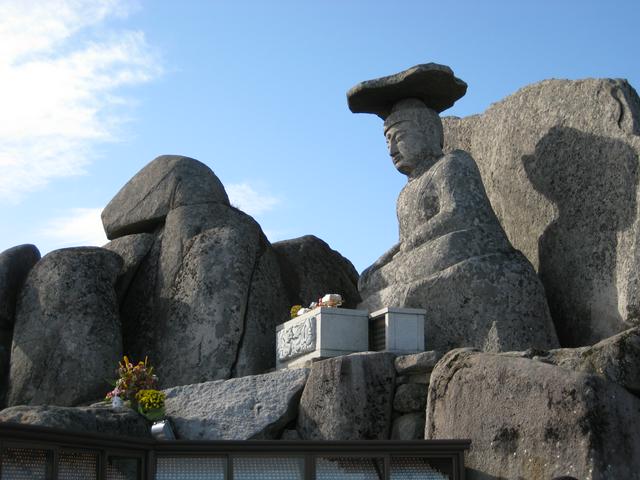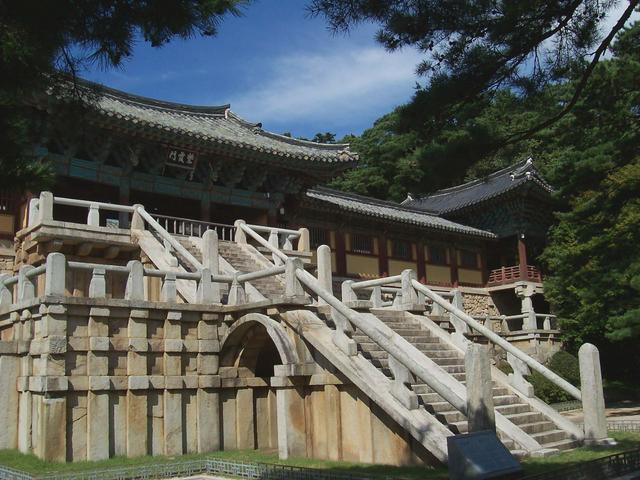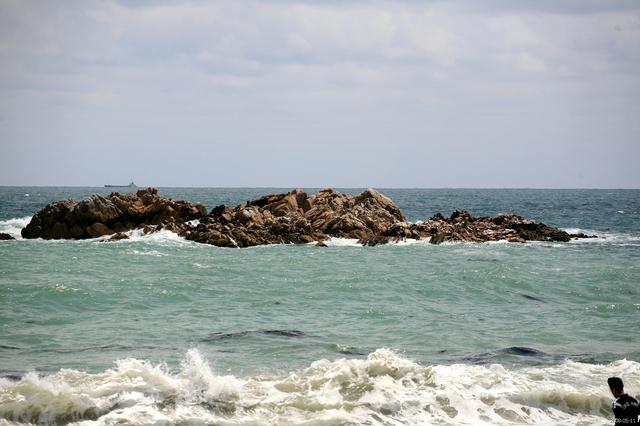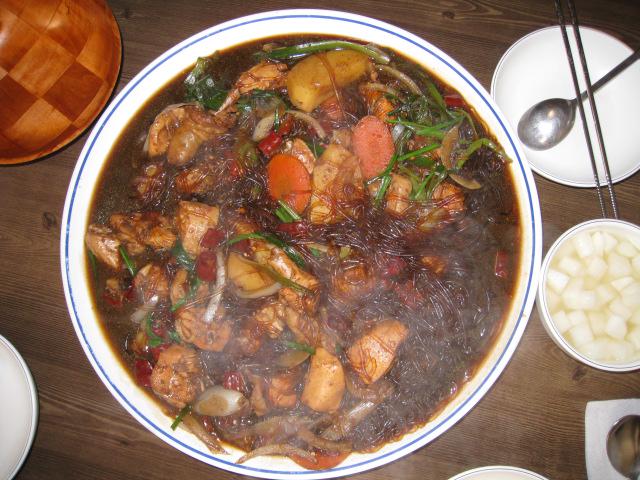North Gyeongsang(경상 북도 Gyeongsangbuk-do, 慶尙北道) is a province of South Korea where Buddhist traditions of the Silla kingdom and the centre of Confucian philosophies meet.
- Andong. - home to the Hahoe Folk Village and Confucian teachings, as well as being famous for growing arguably the most delicious apples in all of Korea.
- Daegu. - the largest city in the province.
- Gumi. - industrial city considered the mecca of the Korean electronic industry.
- Gimcheon. - the city with a number of beautiful parks and the famous temple, Jikjisa.
- Gyeongju. - the former capital of the Silla kingdom.
- Pohang. - center of steel production, and the largest port city on the east coast where ferries leave for Ulleungdo.
- Yeongcheon. - historic city full of temples.
Andong. - home to the Hahoe Folk Village and Confucian teachings, as well as being famous for growing arguably the most delicious apples in all of Korea.
Daegu. - the largest city in the province.
Gumi. - industrial city considered the mecca of the Korean electronic industry.
Gimcheon. - the city with a number of beautiful parks and the famous temple, Jikjisa.
Gyeongju. - the former capital of the Silla kingdom.
Pohang. - center of steel production, and the largest port city on the east coast where ferries leave for [[Ulleungdo]].
Yeongcheon. - historic city full of temples.

- Ulleungdo. island - remote scenic island in the middle of the east sea.
- Dokdo. island - east of Ulleungdo, a small disputed island rich in natural resources beneath the sea.
- Juwangsan National Park. - smallest of the national parks, known for its striking shaped limestone peaks and clear waterfalls.
- Cheongnyangsan Provincial Park. - remote with few crowds even in peak season, also one time residence of several notable scholars, kings and holy men.
- Palgongsan Provincial Park. - sprawling forests, near Daegu, it's home to numerous cultural assets.
Ulleungdo. island - remote scenic island in the middle of the east sea.
Dokdo. island - east of [[Ulleungdo]], a small disputed island rich in natural resources beneath the sea.
Juwangsan National Park. - smallest of the national parks, known for its striking shaped limestone peaks and clear waterfalls.
Cheongnyangsan Provincial Park. - remote with few crowds even in peak season, also one time residence of several notable scholars, kings and holy men.
Palgongsan Provincial Park. - sprawling forests, near Daegu, it's home to numerous cultural assets.
Dotted with historic temples and grandiose park reserves, this region is the cultural epicentre of the country. Gyeongju listed as one of the world's 10 most important ancient cultural cities by UNESCO is where you'll find the venerated remnants of the longest running state in Korean history, the Silla kingdom. Andong, the gateway to Confucian teachings and Korean traditions. Still guided largely by Confucian rules, this area is considered one of the more conservative regions in South Korea.
Geographically it is bordered by Sobaek-san, a mountain range that includes Songni-san, in the north and in the west. And in the east before meeting the sea are the Taebaek Mountains that reaches from North Korea.
The Gyeongsang province including the south as well as the north have a distinctive accent that many Koreans consider harsher than let's say the Seoul accent. The accent has more tones to it and sounds more rhythmic. It may be compared to how Japanese sounds.


Most of the attractions are naturally around the historically rich Gyeongju area.
- Bulguksa has a representative relic from the Silla Dynasty.
- Goryeong Daegaya Historic Site features historical remains of the Gaya confederacy that flourished for 520 years during the Three Kingdoms period.
- Hahoe Village is a well preserved, living, functioning traditional village from the Jeoson era based on Confucius traditions.
- Seokuram Grotto has one of the world's finest shrines of Buddha. Both Seokguram Grotto and Bulguksa have been inducted into the list of World Cultural Heritage sites from UNESCO.
- Buseoksa is the home of the second oldest wooden structure and head temple of Hwaeom sect.
- Jijiksa in the town of Gimcheon is one of the oldest temples in South Korea.
Bulguksa has a representative relic from the Silla Dynasty.
Goryeong Daegaya Historic Site features historical remains of the Gaya confederacy that flourished for 520 years during the Three Kingdoms period.
Hahoe Village is a well preserved, living, functioning traditional village from the Jeoson era based on Confucius traditions.
Seokuram Grotto has one of the world's finest shrines of Buddha. Both Seokguram Grotto and Bulguksa have been inducted into the list of World Cultural Heritage sites from UNESCO.
Buseoksa is the home of the second oldest wooden structure and head temple of Hwaeom sect.
Jijiksa in the town of Gimcheon is one of the oldest temples in South Korea.
Not normally distinguished for its food, the region's best known regional speciality is the Andong jjimdak — chunks of chicken with potatoes and transparent noodles in a sweet and spicy dark sauce. Andong, the city rich in Confucian traditions, is where you will find restaurants that serve the dish.

Also from Andong, the best known beverage would be the soju and the sikhye. You know what soju is (refer to South Korea page) but Andong's version of sikhye has a little twist. Normally a cloudy white colour, the drink is made with the omnipresent red pepper powder in Korean cuisine which makes the liquid pink and the taste a little spicy. Best drunk with peanuts or pine nuts.
